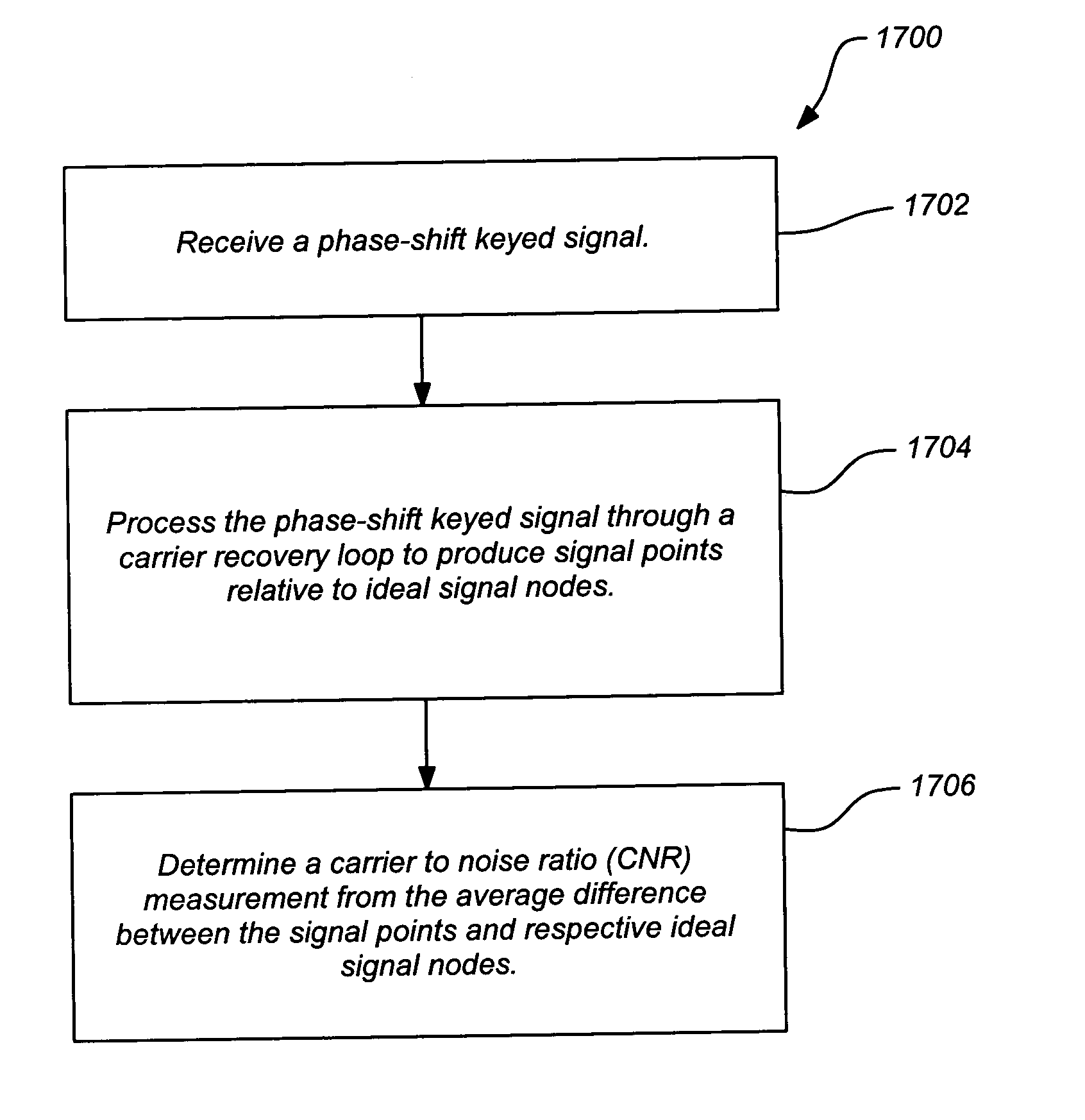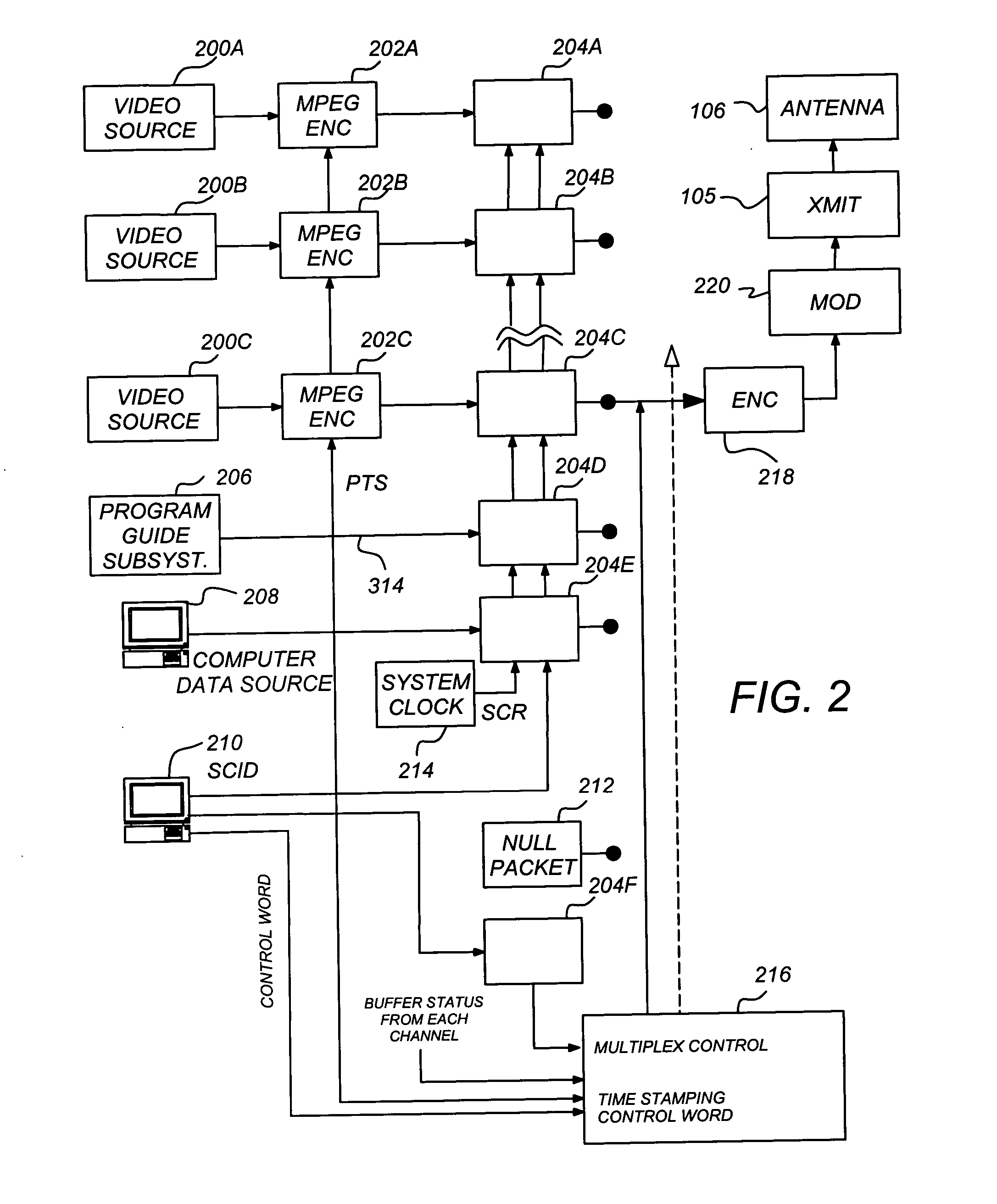Carrier to noise ratio estimations from a received signal
a carrier and noise ratio technology, applied in the field of carrier to noise ratio estimation from received signals, can solve the problems of cnr degradation in the transmitted signal, the upper layer signal required excessive satellite twta power, and beyond, and achieve good signal cancellation
- Summary
- Abstract
- Description
- Claims
- Application Information
AI Technical Summary
Benefits of technology
Problems solved by technology
Method used
Image
Examples
Embodiment Construction
In the following description of the preferred embodiment, reference is made to the accompanying drawings which form a part hereof, and in which is shown by way of illustration a specific embodiment in which the invention may be practiced. It is to be understood that other embodiments may be utilized and structural changes may be made without departing from the scope of the present invention.
1. Overview
U.S. Utility application Ser. No. 09 / 844,401 describes a technique for transmitting digital information using multiple non-coherent carriers occupying overlapping portions of an RF band or channel. This technique is at its most efficient in a satellite transmission environment where each of the interfering carriers pass through a separate TWTA on the satellite. Each amplifier can usually be operated at saturation, generally the most efficient use of such TWTAs.
Sophisticated ground receivers that employ the technique described in U.S. Utility application Ser. No. 09 / 844,401 can d...
PUM
 Login to View More
Login to View More Abstract
Description
Claims
Application Information
 Login to View More
Login to View More - R&D
- Intellectual Property
- Life Sciences
- Materials
- Tech Scout
- Unparalleled Data Quality
- Higher Quality Content
- 60% Fewer Hallucinations
Browse by: Latest US Patents, China's latest patents, Technical Efficacy Thesaurus, Application Domain, Technology Topic, Popular Technical Reports.
© 2025 PatSnap. All rights reserved.Legal|Privacy policy|Modern Slavery Act Transparency Statement|Sitemap|About US| Contact US: help@patsnap.com



